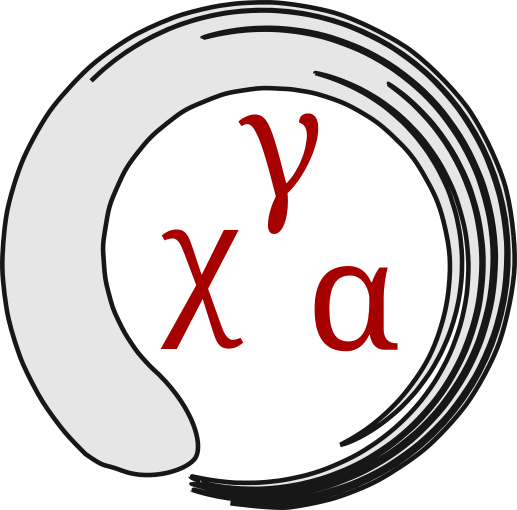Bayesian Interlude - Calculating P(X>Y)
This post is a little sidenote to the last post on the Bayesian analysis of a game for children. Here we will calculate the expression \(P(X>Y \vert I)\) given information about two variables \(X\), \(Y\).
We will use the notation from the last post, especially \(I\) being all background information we have on a subject. We are interested in the following scenario for variables \(X\), \(Y\) which are absolutely continuous and real-valued: How do we calculate the probability \(P(X>Y \vert I)?\)
Let us try to write \(P(X>Y \vert I)\) in terms of a much simpler expression, namely \(P(X>Y \vert X,Y,I)\). The latter is just the probability of \(X>Y\) given both \(X\) and \(Y\). This case is very easy to express because we can be 100% sure whether \(X>Y\) is true when we are given \(X\) and \(Y\). Thus we can write this probability using the Heaviside step function:
\[\begin{equation} P(X>Y \vert X, Y, I) = \theta(X-Y) = \begin{cases} 1 & X > Y \\ 0 & \text{else.} \end{cases} \label{conditional} \tag{1} \end{equation}\]This is not to be confused with the expression \(P(X>Y, X,Y \vert I)\) which is the probability \(X\) and \(Y\) having certain values and \(X>Y\) being true. However, that expression is related to \((\ref{conditional})\) by the product rule:
\[P(X>Y, X, Y \vert I) = P(X>Y \vert X,Y,I) \cdot P(X,Y \vert I), \label{chain}\tag{2}\]where \(P(X,Y \vert I)\) is called the joint probability distribution of \(X\) and \(Y\). This expression helps us a lot because we can also link it to \(P(X>Y \vert I)\) using the marginalization rule:
\[P(X > Y \vert I) = \iint dX \, dY \, P(X>Y,X,Y \vert I),\label{marginal}\tag{3}\]where the integral extends over the whole definition ranges of \(X\), \(Y\). Now we have all pieces together to derive a general expression by first plugging \((\ref{chain})\) into \((\ref{marginal})\):
\[\begin{eqnarray} P(X > Y \vert I) &=& \iint dX \, dY \, P(X>Y \vert X,Y,I) \cdot P(X,Y \vert I) \\ &=& \iint dX \, dY \, \theta(X-Y) \cdot P(X,Y \vert I) \\ &=& \iint_{X>Y} dX \, dY \, \cdot P(X,Y \vert I). \end{eqnarray}\]So we arrive at the desired expression by integrating the joint probability distribution over all value pairs \((X,Y)\) with \(X>Y\). That also makes sense intuitively, which is always reassuring.
Special Cases and Extensions
Independent Variables
\(X\) and \(Y\) being independent implies that the result of \(X\) does not influence \(Y\) and vice versa. Formally we can say that \(P(X \vert Y, I) = P(X \vert I)\) and \(P(Y \vert X, I) = P(Y \vert I)\). This means that the joint distribution becomes a product:
\[P(X,Y \vert I) = P(X \vert I) \cdot P(Y \vert I) \text{ for independent variables X, Y.}\]Extension to More than Two Variables
It is easy to extend the reasoning above to more than two variables. Let us take three variables \(X\), \(Y\), and \(Z\). Say we are looking for \(P(X>Y, X>Z \vert I)\), which is the probability of \(X\) being larger than both \(Y\) and \(Z\).
We can just follow the steps above. The only thing that requires a tiny bit of attention is the expression \(P(X>Y, X>Z \vert X,Y,Z, I)\) because we have to express the logical and in the expression “\(X>Y\) and \(X>Z\)” as a function. We do so by using the product of \(\theta\)-functions:
\[P(X>Y, X>Z \vert X,Y,Z, I) = \theta(X-Y)\cdot \theta(X-Z).\]Every other step is pretty much exactly as above, so that we end up with
\[P(X>Y, X>Z \vert I) = \iiint_{X>Y, X>Z} dX \, dY \, dZ \, \cdot P(X,Y,Z \vert I),\]which can obviously be generalized to more variables.

Comments
You can comment on this post using your GitHub account.
Join the discussion for this article on this ticket. Comments appear on this page instantly.